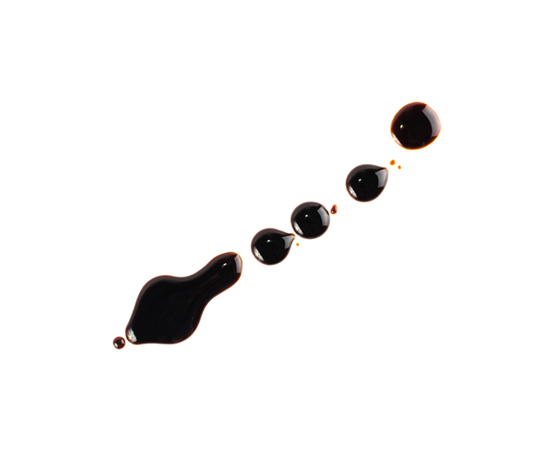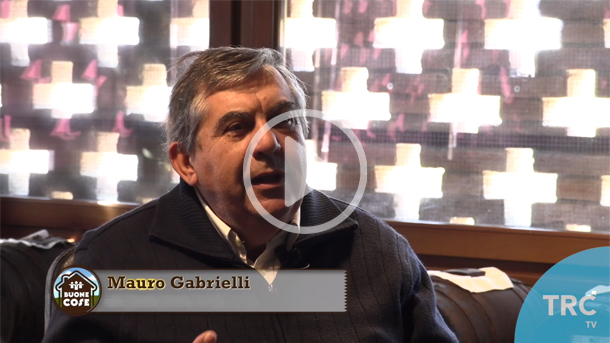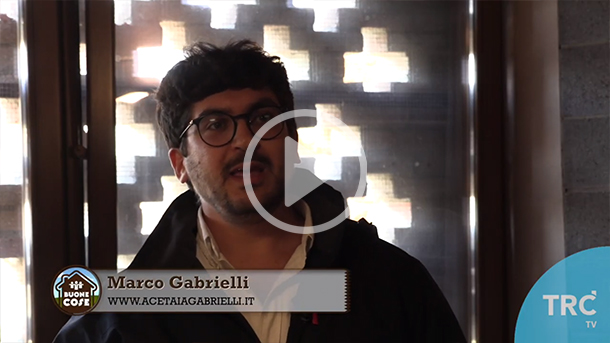
![]()
History
of Ancient Knowledge
The acetic biossidation, or the process of production of vinegar from alcoholic liquids by atmospheric oxidation, is an art that man has learned to master from the earliest times.
Must and vinegar were commonly used by Egyptians, Babylonians and Persians. There are also many testimonies related to the production and use of vinegar at the Greeks and, later, the Romans. In Rome and in the Empire this was used for the
preservation of food, as a medicine and as a condiment, so much so that the acetabulum, the ampoule containing vinegar, was always present on all tables.
As was present the Posca, a drink common in ancient Rome that, because of its economy, was widespread among the people and the legionaries.
The mixing water and wine vinegar, thus obtaining a thirst quenching, slightly acidic, and disinfecting properties.
Mentioned in the Gospels, Posca soaked the Holy sponge, used by the centurion to wet the lips of Jesus Christ, dying on the cross.
Since the time of the ancient Romans, however, there are written testimonies of a special product, a different vinegar, very particular for its aromas and taste, made in territories of today.
Columella, lived from 4 to 70 AD, in De Rustica describes the characteristics of the cooked must produced in these territories and stresses that the sweet and sour liquid can easily sour. For this reason Columella recommends reducing the grape must by at least one third of the original volume in order to obtain an optimal and dense product.
In Roman times grape must, depending on its use, could be concentrated fino at three different levels. Caroenum if concentrated by 30%, Defrutum by 50% and Sapa if reduced to a third.
With a jump of a few hundred years, always in the same area, the monk Donizone, describes in De Vita Mathildis (1111-1116 AD) an episode of the year 1046 concerning Henry II king of Franconia (kingdom including practically all central Europe, northern Italy) who sent a request to Marquis Bonifacio of the Feud of Canossa for a cask of “that vinegar which had been praised to him and which he had heard made there most perfect”.
The Marquis of Canossa, called his artists, quickly made a silver sculpture representing a cart pulled by oxen and, placed on the cart a barrel of his vinegar sent everything as a gift to the king who “was very expensive the magnificent gift”. The text of the monk Donizone is the first document that testifies to the presence, in the territory of today’s provinces of Modena and Reggio Emilia, of a vinegar so exceptional that it can be sent as a gift to a King.
Interview on TRC TV

![]()
Alchemical Symbol
of Vinegars and Vinegars
Referring to the alchemical symbol of vinegars and vinegars, fin from the early Middle Ages was used to communicate about vinegars with this symbol universally recognized.
Alchemical symbols were considered a unique language of natural elements and substances when there was no knowledge of chemistry.
During the course of the centuries there are various testimonies that refer to a vinegar extraordinarily good, produced in the lands of Modena and Reggio Emilia.
It is not possible to know with certainty if that was already Balsamico because the objective documentation is missing and the opinions of historians are divided: without a doubt, however, that product was very different from the blends obtained by combining wine vinegar and sapa.
Mixtures very common in that era.

Starting from the ‘500 the history of the’ Balsamic Vinegar is intertwined with that of the casato degli Este. In an anonymous volume kept at the Biblioteca Estense in Modena entitled La Grassa. Libro de Boletini (1556) is reminded that in the Ducal dispensers were present classic vinegars at different levels of quality to be used according to need: “agresto”, “comune”, “comune per la bocca”, “da tavolo”, “da campagna”, “per cucina”, “per gentilhomini”.
When the Estensi in 1598 moved from Ferrara to Modena, they brought all their vinegars with them, but there they discovered another, unknown to most, produced at a family level and in confined environments, it is not known how long. It had different characteristics, a harmony of flavors and scents unmatched and soon was recognized its excellence compared to products known at court fino at that time.
The city archives give great evidence of the movement around the production of a vinegar different from the common, and this finds its origins in the oldest and most genuine vocation of the people of Modena to acetificare.
The fame of this vinegar spread rapidly, nourished also by the aura of mystery around its preparation. It is a fact that the charm of this liquid is as good as must have infected, when he moved to Modena, the Corte degli Estensi that immediately showed great appreciation and, in the centuries to come, gave the balsamic a “patent aristocratic”.
In the ducal palace he thus took up residence in the attic of the west tower, towards San Domenico, an acetaia fed with must “purged and reduced according to practice”. In that tower matured over time an exceptional product that, for the first time in 1747, on the registers of the secret cellars of the Corte Estense, was named Vinegar Balsamic, the same that was known as Aceto del Duca, denomination sign of distinction and preciousness.
From the XVIII century onwards the news about the Balsamic increase, even if around this product the reserve of the families that possess it remains. In the nineteenth century find fundamental testimonies about the use of cooked must only to produce what is today the Balsamic of tradition. These indications bear the names of Count Giorgio Gallesio and Lawyer Francesco Aggazzotti.
The Count Giorgio Gallesio, eclectic personality in various fields of public life and studies, with marked interest in the field of agriculture, in his manuscript, particularly precise in the description of the acetaia of the Conti Salimbeni and of what it contains, this is how it is expressed: Modena vinegar is of two kinds, that is must vinegar and wine vinegar, nor does it seem decided which is the best. The only difference between must and wine vinegar is in the first element of the operation. We have seen that the must must begins with the cooked must, the wine with the wine, that is with the must fermented without being subjected to fire».
The Lawyer Francesco Aggazzotti, notary and prominent figure of the environment of Modena, was the first to indicate in a detailed and timely procedure to follow to obtain the Balsamic with the use of cooked must only. Of particular importance are two letters in which he describes the productive habits of his family. These documents will become the official recipe and the basis for the Disciplinary of Production of Traditional Balsamic Vinegar of Modena.

![]()
The Production
Method
TheTraditional Balsamic Vinegar of Modena is obtained alone cooked grape must and is aged for a long time with the ancient system of Rincalzi and Travasi in ancient batteries composed of small barrels of different woods and scalarities.
The lawyer Francesco Aggazzotti wrote two letters containing the indications to maintain a acetaia and manage the grapes and the barrels. Below is the list of steps fundamental to obtain a good Traditional Balsamic Vinegar P.D.O., according to the indications contained in these writings and subsequently regulated:
1 – Use only grapes native to the territory of Modena, grown here.
2 – Do not press too hard, to avoid future unpleasant smells and flavors due to this step.
3 – Cook the must.
4 – Ferment.
5 – Transfer the liquid obtained into the barrels where it will be able to acetificare.
6 – Don’t rush.
7 – Check the product regularly.
8 – Repeat the same procedure the following year for minimum 12 years for obtain a product P.D.O.
9 – If you have the patience to wait 25 years and the constancy to work with care, you will get a P.D.O. Extravecchio.
Learn more about the production method of Traditional Balsamic Vinegar are provided to us by the ancient house of the Counts Rosselli della Mirandola.
Mirandola Balsamic Vinegar
From a kind descendant of the ancient house of the Counts Rosselli della Mirandola I have news that balsamic vinegar was traditionally obtained in the following way: «Remembered that the “balsamic” of the family consisted of eight vessels of various sizes, of which the smallest the best, At the time of harvest, about 3 quintals of Trebbiano fermented in a normal vat fino to the raising of the graspe that formed the well-known “hat”: a sure indicator for the immediate lifting of the must. This was momentarily placed in a vat or wooden tubs after passing through a wicker basket (to retain any seeds or grape skins) to be poured into a large tin copper boiler.
Boiled together with a bag of juniper and a large iron key, the must was reduced to a third.
Cooled in tubs, the must cooked to sour was then poured on the “mother” existing in the appropriate vat (closed by wooden lid) to undergo the processing process remaining there fino to the new harvest of the following year and then transferred to vessel No. 8 after the contents of this was entered in No. 7, etc.
In the meantime, the following decanting operations were carried out: from vessel No. 2, part of the vinegar contained was removed and entered into No. 1, from which what the bottle could give for the consumption of the vintage was first removed; a fragrant product, thick and black.
From vessel No. 3 was introduced in the n. 2 part of the liquid that contained and so later fino to n. 8. In vessel No. 8 that remained half empty for the passing in the nearby vessel No. 7, was poured as already mentioned that cooked must that was contained for a year with the
“mother” in the dedicated vat placed at the time of harvest for the transformation into vinegar».
Tradition Today
Today’s reality presents a more decipherable scenario than in the past. Next to the Traditional Balsamic produced by hundreds of families in the quiet of their attic, you are on sale two separate vinegars, not even comparable: Balsamic Vinegar of Modena PGI and Traditional Balsamic Vinegar of Modena P.D.O.
The two products derive from the same production tradition that over time has specialized and differentiated according to market demands. L’Balsamic Vinegar IGP, appreciated and recognized worldwide is produced with a faster aging process and in large barrels size, therefore for much larger quantities, using as raw material a mixture of concentrated or cooked grape must and wine vinegar. L’Traditional Balsamic Vinegar of Modena P.D.O., instead, is the result of only cooked must for very long aging in small barrels in drums.


Classes
Traditional Balsamic Vinegar of Modena P.D.O. (12 years)
Aged for at least 12 years with the ancient system of Rincalzi and Travasi in vessels made of different woods.
Identificato from capsules of burgundy color and marketed within the classic bottle created by the designer Giorgetto Giugiaro.
Traditional Balsamic Vinegar of Modena P.D.O. (25 years)
Aged for at least 25 years with the ancient system of Rincalzi and Travasi in vessels made of different woods.
Identificato from capsules of color gold and marketed within the classic bottle created by the designer Giorgetto Giugiaro.
The Specification
Following the thread of the tradition the people of Modena continue to acetificare, and it does so following very precise rules.
Currently in order to market the Traditional Balsamic Vinegar of Modena P.D.O. you must follow the rules described in Production Regulations.
In the Production Regulations all the criteria to be followed during the production process, the vines to be used and the woods suitable for each stage are set out of aging. For example, to produce the Traditional you can use musts from the following varieties and the following woods.
Vines: Lambrusco (all variants or clones), Handmaid, Trebbiano (all variants or clones), Sauvignon, Footstool, Berzemino, Occhio di Gatto.
Woods: Oak. Chestnut, Cherry, Mulberry, Juniper. Robinia Ash.
Acetieri
Passion, patience and know-how. Currently there is a Consortium of Protection, some entities and one Consortium which have the objective of protecting and promoting Balsamic Vinegar Traditional Modena as a product of excellence.
The Consorzio dell’Aceto Balsamico Tradizionale brings together almost all the producers who participate in this way, with their daily commitment to production and the dissemination of the product and its peculiarities.
-> Consorzio di Tutela Aceto Balsamico Tradizionale di Modena D.O.P.
-> Consorteria Aceto Balsamico Tradizionale Spilamberto
-> Museo del Balsamico Tradizionale Spilamberto
-> Acetaia Comunale di Modena


